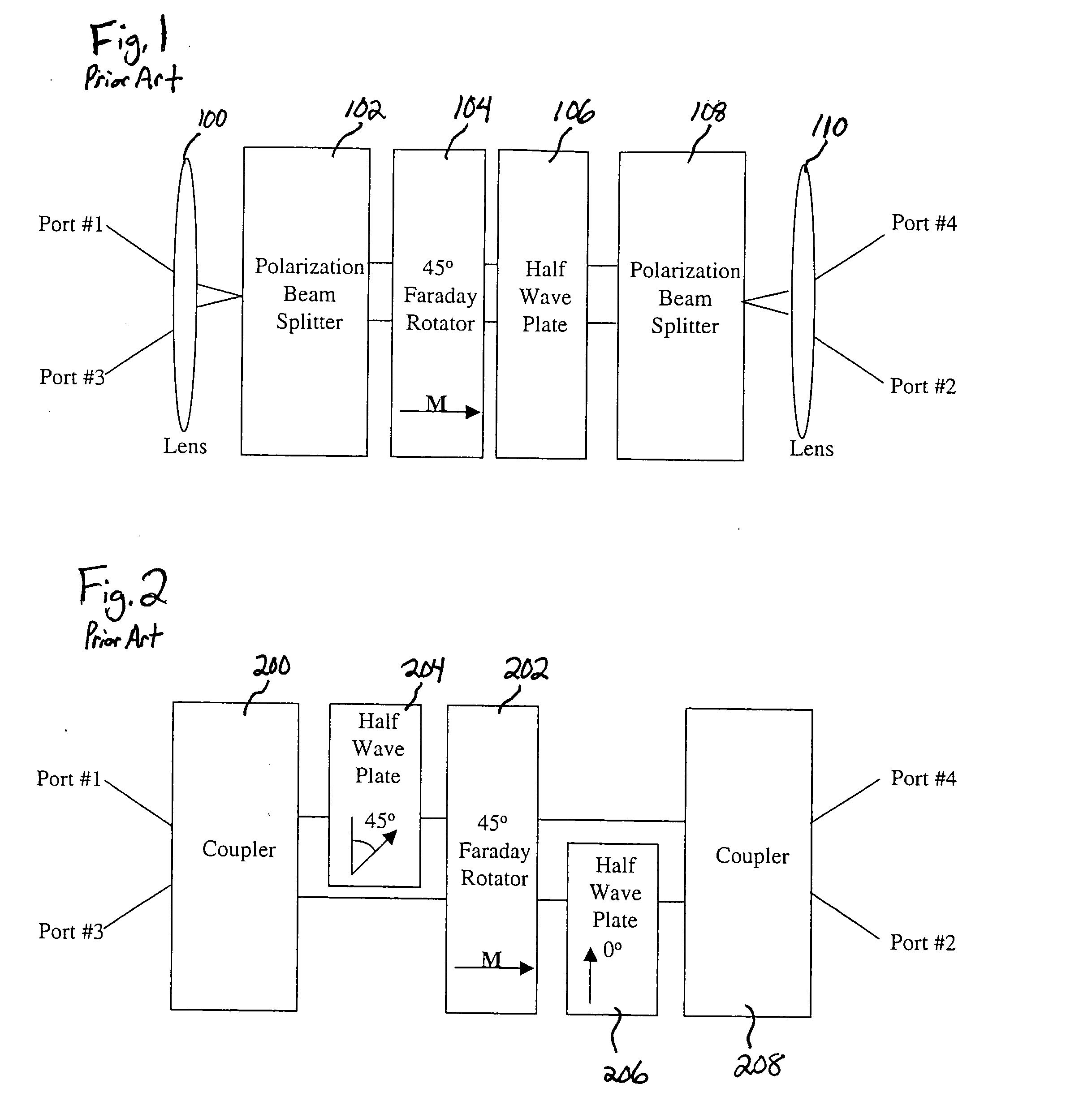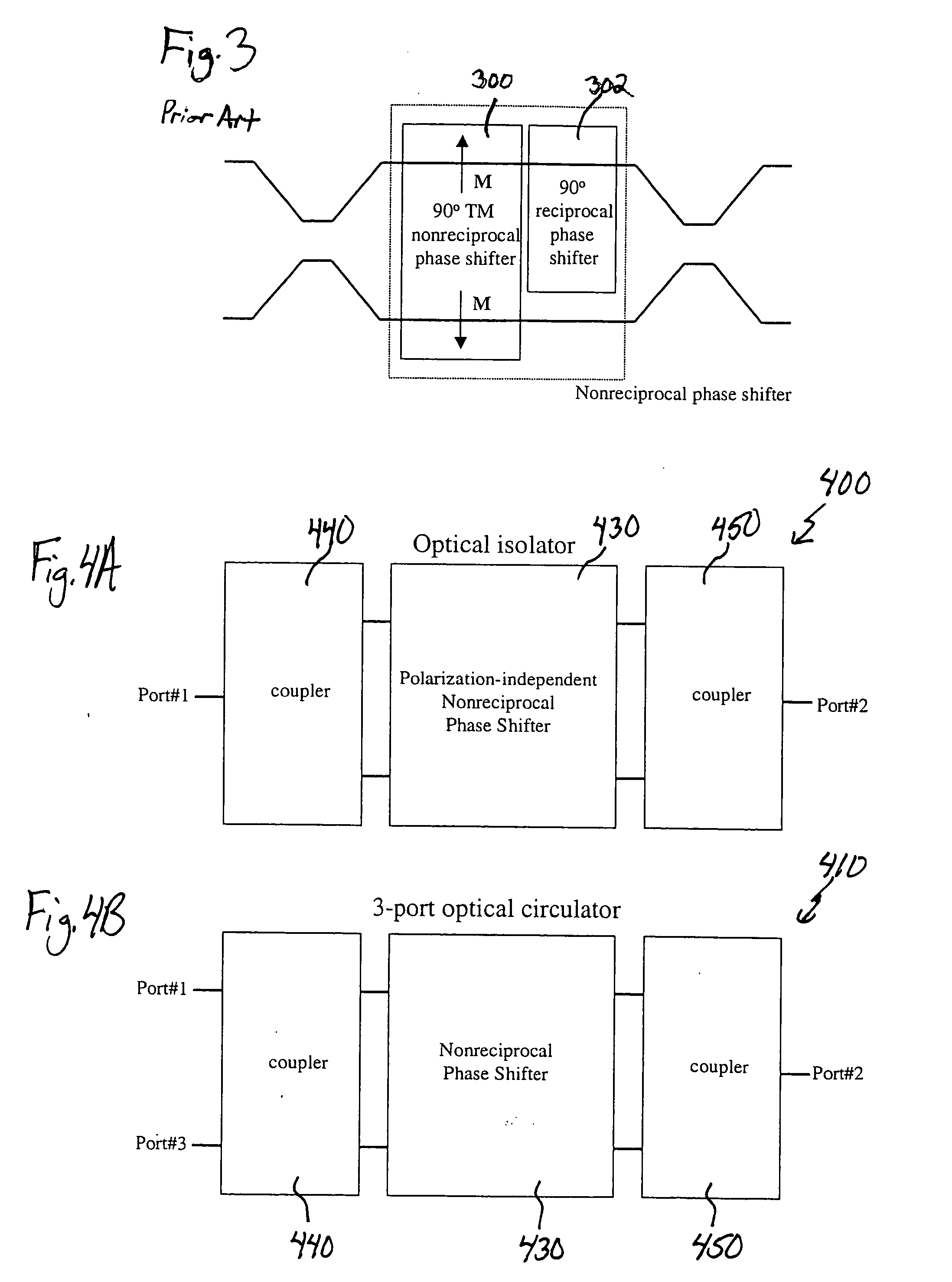Polarization independent waveguide optical isolator and circulator
a polarization independent waveguide and optical isolator technology, applied in the field of optical isolators and optical circulators, can solve the problems of high device cost, inability to easily integrate the design of the device into the planar optical circuit, and the bulky single-crystalline elements of the available devi
- Summary
- Abstract
- Description
- Claims
- Application Information
AI Technical Summary
Benefits of technology
Problems solved by technology
Method used
Image
Examples
Embodiment Construction
[0030]FIGS. 4A-4C are schematic block diagrams of exemplary embodiments of polarization independent 2-port (400), 3-port (410), and 4-port (420) isolators / circulators based on a nonreciprocal phase shifter in accordance with the invention. The isolators / circulators include input and output ports, an interferometer, and a polarization-independent nonreciprocal phase shifter (430). The input and output have either one or two ports to make the device an isolator (400), a 3-port circulator (410), or a 4-port circulator (420). The interferometers consist of two couplers (440, 450) and two optical paths in between.
[0031] The first coupler (440) divides the intensity of the incoming optical signal evenly into the two arms of the interferometer. The two resulting optical signals undergo different phase shifts depending on the propagation direction. The second coupler (450) transmits light from the two paths into one of the output port(s) based on the relative phase difference between the t...
PUM
| Property | Measurement | Unit |
|---|---|---|
| total polarization rotation | aaaaa | aaaaa |
| thickness | aaaaa | aaaaa |
| thickness | aaaaa | aaaaa |
Abstract
Description
Claims
Application Information
 Login to View More
Login to View More - R&D
- Intellectual Property
- Life Sciences
- Materials
- Tech Scout
- Unparalleled Data Quality
- Higher Quality Content
- 60% Fewer Hallucinations
Browse by: Latest US Patents, China's latest patents, Technical Efficacy Thesaurus, Application Domain, Technology Topic, Popular Technical Reports.
© 2025 PatSnap. All rights reserved.Legal|Privacy policy|Modern Slavery Act Transparency Statement|Sitemap|About US| Contact US: help@patsnap.com



